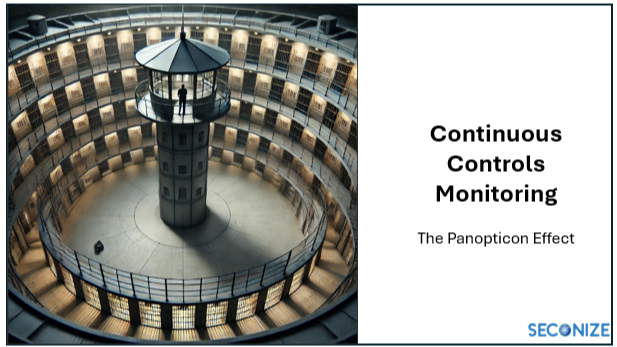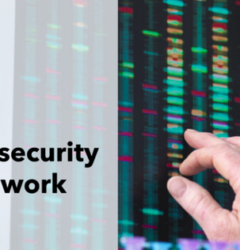In the late 18th century, English philosopher and social theorist Jeremy Bentham proposed a radical architectural design for prisons known as the “Panopticon.” The concept was simple yet profound: a circular prison building with a central observation tower. The unique design allowed a single guard to observe all inmates without them ever knowing if they were actually being watched. This uncertainty, theorized Bentham, would compel prisoners to regulate their own behavior, maintaining order not because they were forced to, but because they believed they could be watched at any time.
Over time, the “Panopticon effect” has evolved into a metaphor widely used to describe scenarios where a state of constant potential observation—or at least the perception of it—influences behavior. Today, we see this concept applied well beyond prison walls: from the all-seeing eye of surveillance cameras in public spaces to the subtle presence of performance analytics software in the workplace.
One increasingly important arena where the Panopticon effect is making its mark is within the domain of automated controls gap assessment, a key component in modern cybersecurity and regulatory compliance.
What Is the Panopticon Effect? The Panopticon effect stems from the idea that people behave more ethically and efficiently when they believe they are being monitored. In Bentham’s original thought experiment, the guard in the central tower need not watch every prisoner at every moment. The mere possibility of being observed at any time was enough to elicit self-discipline and accountability from the inmates. The uncertainty created a powerful psychological deterrent against misbehavior.
In the centuries since Bentham’s design, scholars like Michel Foucault have expanded on these ideas, connecting them to institutional power structures. Today, the Panopticon effect functions as a mental model for understanding how visibility—or the perception of potential visibility—shapes human actions and compliance with rules and norms.
From Stone and Steel to Bits and Bytes Fast-forward to the digital age, where “watchtowers” are not physical structures but sophisticated software systems. Instead of prison guards, we have automated controls, real-time monitoring dashboards, and advanced analytics tools. Just as the Panopticon enforced discipline without direct confrontation, modern automated oversight tools encourage organizations to maintain adherence to policies, procedures, and regulations—often with minimal human intervention.
What Are Automated Controls Gap Assessments? Automated controls gap assessments are tools and processes designed to continually evaluate and identify discrepancies between established security or compliance requirements and the organization’s current state. These systems monitor everything from user permissions and firewall configurations to transactional logs and system events, automatically flagging deviations from expected standards. In doing so, they serve as a persistent “observer,” always ready to shine a light on blind spots.
A controls gap assessment might check whether user access rights align with role-based policies or whether a particular environment meets the criteria laid out by a data protection regulation like GDPR or HIPAA. Continuous, automated gap assessments ensure that organizations know precisely where they stand on any given compliance or security metric.
How Automated Assessments Enhance Security and Compliance
- Preventive Insight: Much like the Panopticon’s unseen guard, automated and continuous controls monitoring, make it known that every configuration, access request, or data transfer may be scrutinized. This awareness encourages security teams, system administrators, and even end-users to “do the right thing” by following established protocols, thereby reducing the likelihood of human error or malicious activity.
- Real-Time Responsiveness: These systems operate continuously, providing immediate alerts when gaps or anomalies are detected. Instead of waiting for a scheduled audit, companies can resolve issues as they arise, reducing both the window of vulnerability and the risk of non-compliance.
- Accountability and Transparency: Automated monitoring tools leave an auditable trail of changes and events. Knowing that these logs exist—and that regulators, auditors, or internal compliance officers can review them at any time—reinforces adherence to policies. Employees and stakeholders understand that transparency is baked into the system, incentivizing them to maintain compliance.
- Resource Efficiency: Traditionally, compliance checks required time-consuming manual audits. Automated gap assessments streamline this process, freeing compliance teams and security professionals to focus on strategic improvements rather than manual oversight tasks.
Drawing the Parallel: The Modern Panopticon Effect The Panopticon was never just about surveillance; it was about the psychological power of potential observation. The same dynamic plays out today in the realm of security and compliance. Organizations implement automated controls and continuous monitoring not merely to catch wrongdoing after the fact, but to create an environment where individuals and systems naturally adhere to best practices.
Instead of a guard staring from a central tower, we have software continually scanning, validating, and reporting on compliance posture. Instead of inmates, we have employees, business processes, and digital assets that self-regulate because they know the system is actively measuring their compliance. The subtle power of “potential observation” is now embedded in the code of modern enterprises.
Ethical Considerations While the Panopticon effect can significantly bolster security and compliance, it also raises questions. Is there a risk of over-surveillance? How do we balance the need for robust oversight with employee trust and autonomy? The key is transparency and proportionality. Organizations must clearly communicate what is being monitored, why it is essential, and how it benefits everyone. Striking the right balance ensures that the Panopticon effect reinforces positive security culture rather than stifling innovation or morale.
Conclusion: Embracing Responsible Visibility As cyber threats and regulatory demands escalate, organizations must evolve their strategies to maintain both security and compliance. Automated controls gap assessments serve as a modern-day digital Panopticon—ever-watchful, always ready to highlight risks, and perpetually encouraging a state of readiness. By embracing the Panopticon effect responsibly and transparently, enterprises not only tighten their security posture but also foster a culture where compliance is instinctive, trust is reinforced, and risks are minimized before they escalate into crises.












Recent Comments